The Samsung Galaxy Tab S2 Review
by Brandon Chester on October 15, 2015 8:00 AM ESTSystem Performance: GPU
While CPU performance characterizes one part of an SoC, GPU performance characterizes another. Tablets have long been a form factor where GPU performance can be pushed much further than in a phone due to the larger chassis of a tablet having far fewer size and thermal limitations. While some tablets elect to use specialized SoCs with more powerful GPU hardware than smartphones, the Tab S2 uses the same ARM Mali T760 GPU used in the Galaxy Note 4 Exynos.
To characterize the Tab S2's GPU performance I've run it through our standard GPU benchmarks. First up is 3DMark which actually has both a CPU and GPU component, followed by BaseMark X and GFXBench which focus more strongly on the GPU alone.
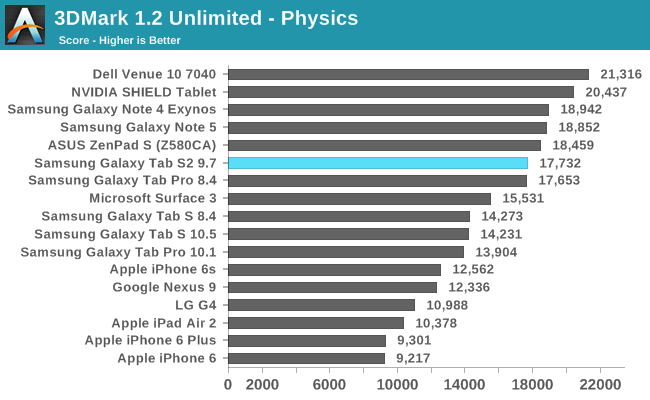


In 3DMark all of the Tab S2's scores are roughly equivalent to the Galaxy Note 4 Exynos which is not unexpected. Unfortunately, it's clear that Mali T760 can't keep up with NVIDIA's mobile Kepler implementation or Apple's custom 8 core PowerVR 6XT part. While the Nexus 9 and iPad Air 2 both fall short in the physics sub test their scores in the graphics sub test are in a completely different league than the Tab S2.
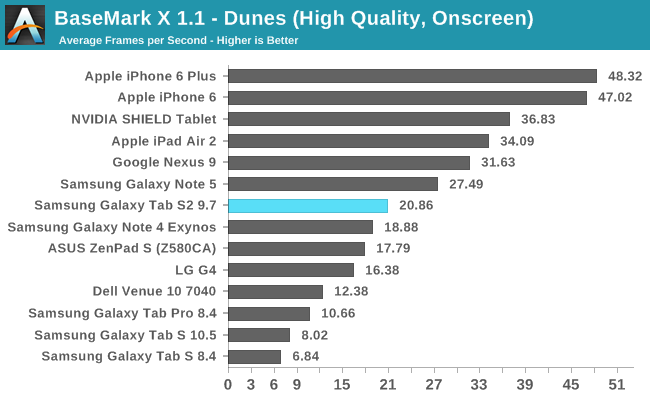
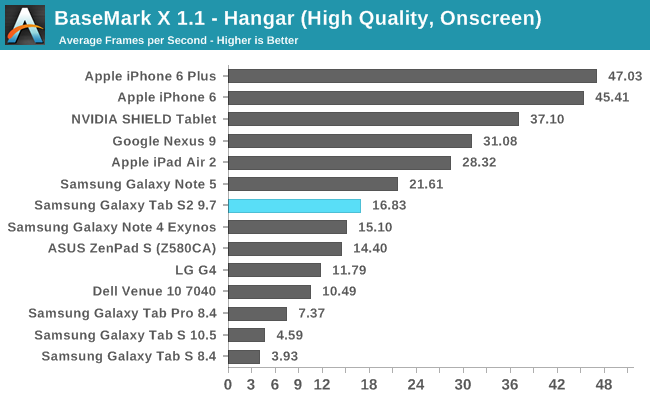
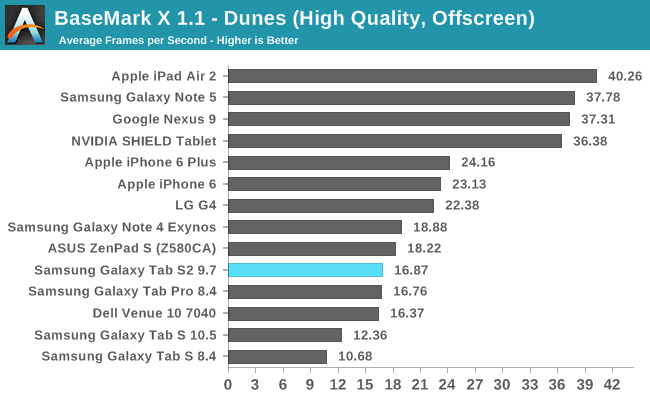
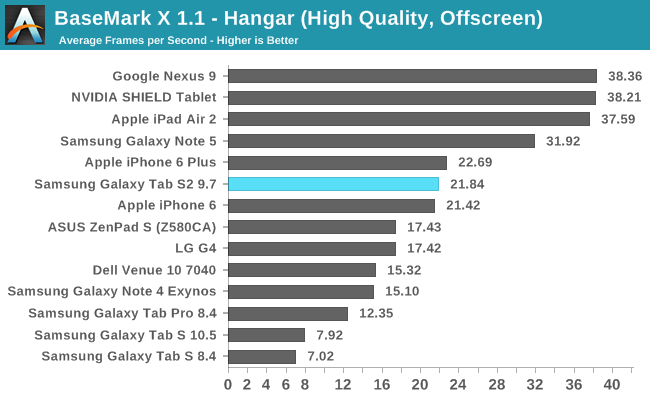
In BaseMark X we again see the Tab S2 sitting fairly far behind the iPad Air 2 and Nexus 9. If I was considering the Tab S2 8.0 which retails for $399 these results would be perfectly fine, as the major competition at that price point is the iPad Mini 4 which has Apple A8 SoC. At $499 the GPU performance simply isn't competitive, and it outlines the issues with trying to make one SoC fit many different devices.
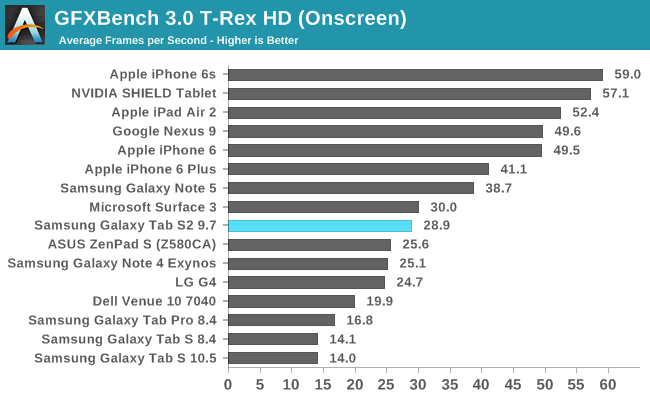
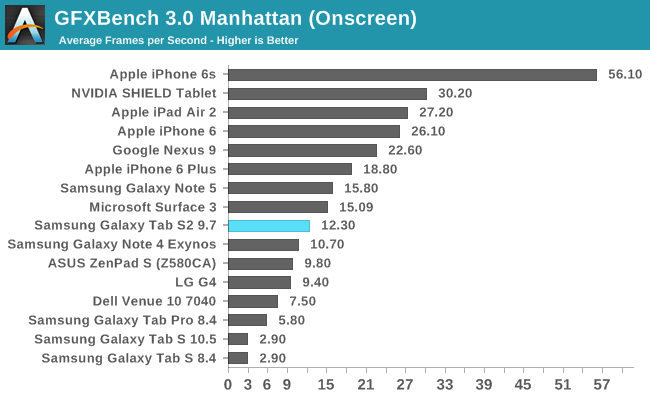
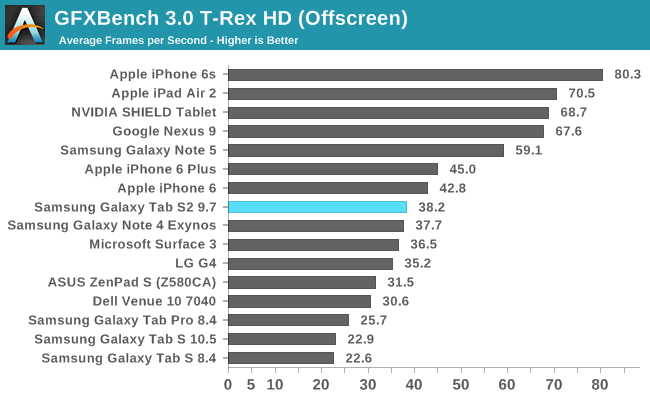
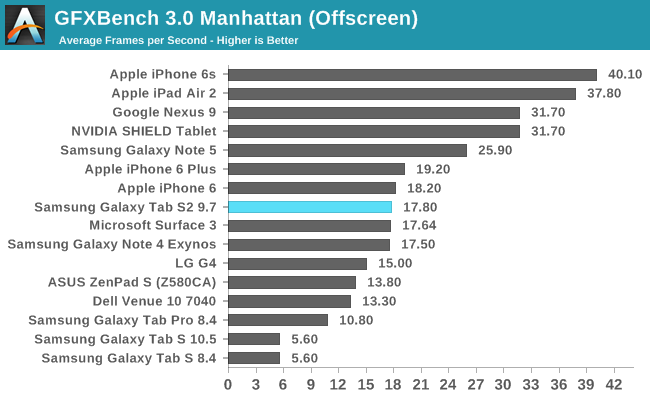
In GFXBench the Tab S2 is in the same situation as the previous tests. GPU performance is right around where the Galaxy Note 4 and iPhone 6 are, and it's just not good enough to justify the $499 price tag of the Tab S2.
Like I said on the last page, the fact that most Android tablet OEMs aren't providing CPU and GPU performance that is anywhere near competitive with the iPad Air 2 is a very bad thing for the entire tablet industry. Apple decided to not even update the iPad Air 2 despite it being a year old, and it's hard to blame them when nobody is close to them as far as performance is concerned. Having various manufacturers pushing each other to constantly improve is one of the primary drivers behind the advancements made in the mobile space, and I'm concerned that this no longer exists in the tablet market as the only tablets that come close are ones with NVIDIA's SoCs which also happen to be tablets that don't ship in very great volume.
System Performance: NAND
While it's still not advertised in specifications like on laptops, a mobile device's internal storage is now being recognized as a highly relevant part of overall system performance. Internal eMMC NAND solutions have traditionally had very poor storage performance, and different vendors have done different things to address the problem.
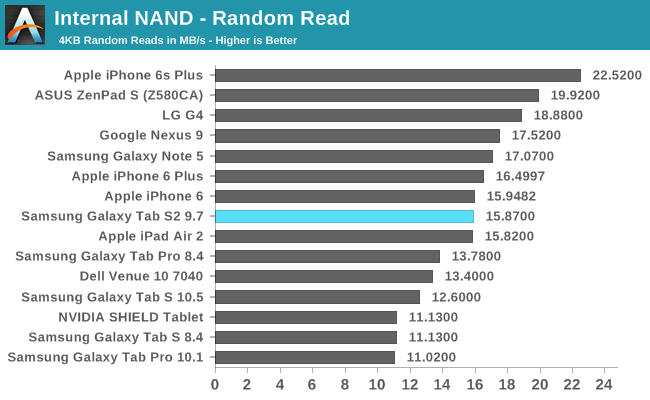
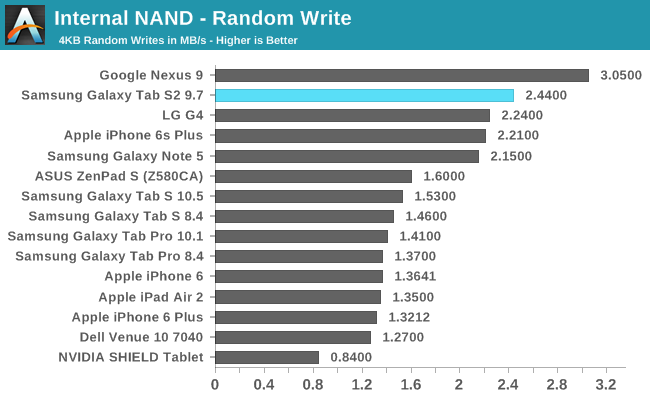
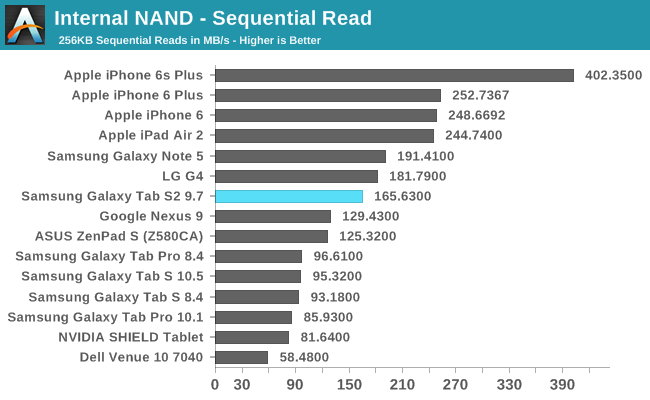
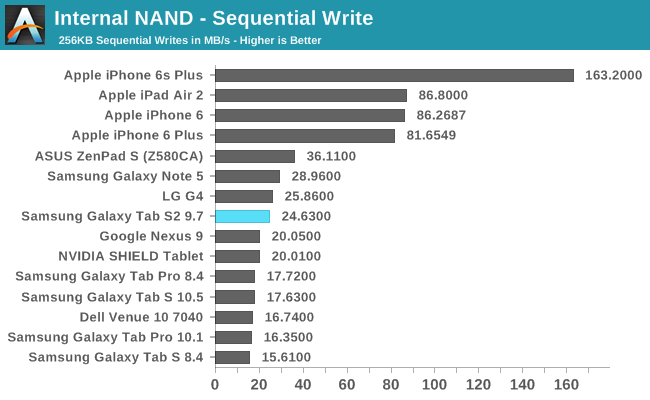
Both sets of read and write results are right around what you'd expect. Random writes in particular are very fast, and all the other results are fairly similar to those of the Galaxy Note 5. I don't expect internal NAND speeds will be a bottleneck on the Galaxy Tab S2, which is expected and fitting of a flagship tablet.










162 Comments
View All Comments
lilmoe - Thursday, October 15, 2015 - link
Not really feeling iOS and Android outside the smartphone/phablet form factor (and some media players that size). Maybe for 7-8" devices. On "full sized" tablets (and above) though, I'd only go for Windows.Jumangi - Thursday, October 15, 2015 - link
Exactly how I work. Android for phone, but the iPad is my tablet of choice.thedons1983 - Saturday, October 17, 2015 - link
Blah, blah... Apple fanboy idiot...osxandwindows - Friday, October 23, 2015 - link
How is he a fanboy.I have to say you my friend are a moron.
Speedfriend - Thursday, October 15, 2015 - link
What is this obsession by Samsung over thinness at the expense of battery life. I would rather my S6 lasted a few hours longer and be a bit thicker, than the fact I now have a phone unable to get me through the day. I am even considering going back to a iPhone 6S+, though how I will manage without the S6 features I have grown used to, I don't know - the back button, double click camera launch, clicking links into apps, the ability to lay out my app screens the way I want to, one place for quick settings and notifications.jdjoseph2000 - Thursday, October 15, 2015 - link
Turn on power-save mode and it shall surely last you at least a day..osxandwindows - Thursday, October 15, 2015 - link
So my 6 plus last longer then that thing with out low energy mode?R. Hunt - Thursday, October 15, 2015 - link
On a phone, I agree with you. On a large tablet that's clearly designed to be held as is the case of the Tab S2... I'm tempted to go with light and thin even if it means charging it more frequently.osxandwindows - Thursday, October 15, 2015 - link
I mean the s6thedons1983 - Saturday, October 17, 2015 - link
Then buy a different product, you moron!!